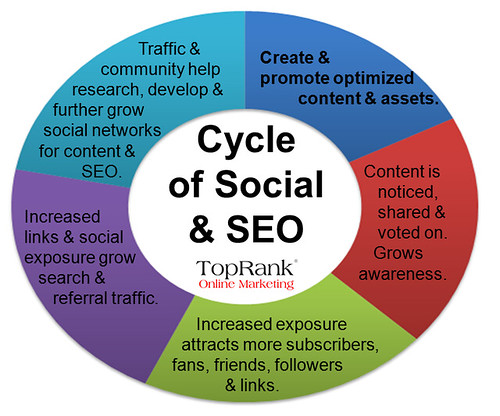 How many times have you heard people (including me) rant and rave about the internet marketing benefits of great content? A lot, I’m guessing. But how many of those pundits and the practitioners that read them stop to consider, What IS great content? What makes it great? How do you define that?
How many times have you heard people (including me) rant and rave about the internet marketing benefits of great content? A lot, I’m guessing. But how many of those pundits and the practitioners that read them stop to consider, What IS great content? What makes it great? How do you define that?
Is it great because the author thinks so? Or because the content was retweeted 700 times and shared 150 times on Facebook? Was it great because there were 70 comments? Those are all things most marketers would feel satisfaction from in regard to content they created and published. But there’s a common disconnect with this idea of “great content”.
What’s the problem with 700 retweets, 150 Facebook shares and 70 comments? Nothing if you’re trying to win a KPI contest. The lost opportunity is that most content that aspires to be “great” is created following subjective interpretations designed to achieve KPI outcomes. “Let’s create an infographic!”, or “Let’s make a viral video!”. These content creation efforts are often mechanical, albeit often creative, efforts to produce something “great” but don’t necessarily answer the questions of “For Who?” or “Why?”.
As marketers, “great content” isn’t just defined by me or you is it? It’s defined by the people the content is intended for – prospects, customers & influencers. It’s defined by the people we’re trying to attract, engage and influence.
Not ALL content needs to be customer defined of course, because many people simply don’t know what they want or like. There are plenty of opportunities to produce content in support of defining a new market, category, concept or way of thinking.
I should mention part of the inspiration for this past was from a Tweet that Scott Stratten shared yesterday morning:

He’s right. Great content, I mean, “great freaking content”, is indeed what people share/spread/link to. But there’s more to the story to make that work.
1. In order for the content to be more than superficial SEO Linkbait, the idea of “great” should consider customers – their interests, needs, pain points and preferences for media formats and sharing . So find out what that means in terms of customer-centric topics, the types of content they best respond to, social channels and even keywords.
Of course we’re not after a filter bubble effect, so there’s plenty of room for creative content that isn’t entirely sourced from customer personas and preferences, but re-framing what “great” means in terms of the final audience is important and often overlooked.
2. Promote the content to people who have influence over distribution (Tell 2 friends, who tell 2 friends, and so on). The ability for your message to propagate is directly related to relevant social networks and community connections. Great content without an audience is pretty damn lonely. As I like to say, “Great content isn’t great until it’s consumed and shared.”
In today’s competitive content marketing environment, promotion of content is essential to get traction. Then it will flourish or not on it’s own merit with the networks of interest that consume it. If you have an interest in sharing your brand’s ideas and affecting influence, then can you really afford to leave “great” content distribution to chance?
There’s a cycle to social and SEO for content sharing that shows some of the most valuable aspects of content marketing. Promoting great, customer and influencer centric content helps grow your network and attract links, which exposes your great content to an even larger universe of people who can share and link, and so on and so on. Each step of the way you can collect data that helps further refine your subsequent content efforts.
An additional reason for considering SEO and Social Media Marketing with great content is the increased weight on links within social content like Twitter, Facebook and Google Plus as influencers on search engine visibility. Great search ranking of content isn’t just about keywords in title tags and links between web pages anymore. A quantity of quality references and links within social channels (as well as the authority of those sources and rate of occurrence) are also important and are a big part of what happens when content is promoted.
So, if you want to create great content, maybe the first step might not be to decide which infographic designer to hire or which tabloid-inspired title tag to write for that monster list of resources you’re going to compile. The starting point is in understanding what it is that your target customer or influencer considers “great”. How does that manifest as topics, search and social keywords? What does it mean in terms of content format? Does it mean images, video, short format tips, long format lists, cartoons, infographics, user generated content and so on? What has worked before in the channels where your customers and influencers spend their time? What hasn’t?
Figuring out what your customers care about along with strong creative, social and SEO execution, means you can create content that is valuable, useful and far more likely to inspire specific business outcomes than something based on a personal, subjective definition of “great” and leaving it to chance to spread.



